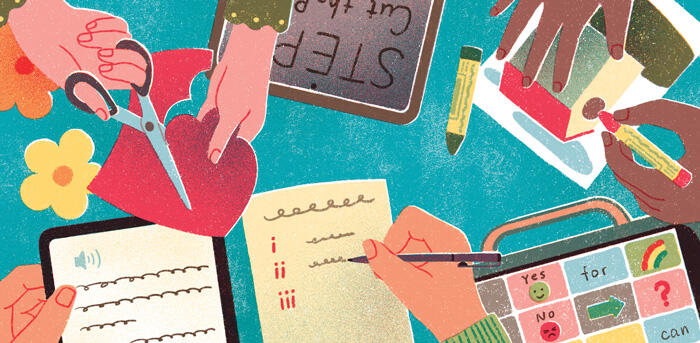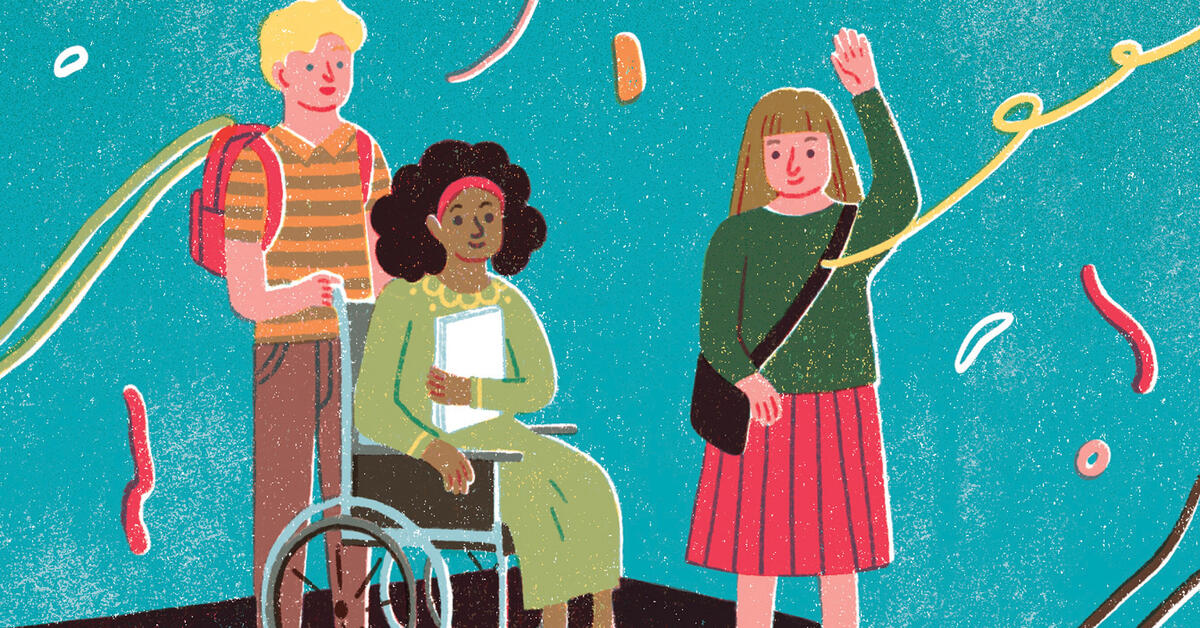But when educators tailor the curriculum and learning environment to a child’s unique abilities and center students’ needs in individualized learning plans, children are more likely to thrive.
Dr. John Mundorf, classroom teacher and assistant professor at the University of Florida’s P.K. Young School of Developmental Studies, encourages educators to ask themselves, “In what ways does the environment create a barrier to learning?” When educators focus on changing the learning environment instead of the learner, they can think about more accessible ways of learning that value flexibility and choice, and that can benefit all learners, according to Mundorf.
A useful way to conceptualize the shared benefits of accessibility is called the “curb-cut effect,” which has its roots in the disability rights movement. Initially, curb cuts (replacing steep sidewalk curbs with wheelchair-accessible, sloping walkways) were intended only to allow people in wheelchairs to move between the sidewalk and the road. But it turns out that ramps help everyone, from families with strollers to cyclists to people carrying heavy loads on trolleys. This shows that solutions that target those who need the most help can benefit society.
By applying curb cut framing to classrooms, educators can create supportive learning spaces for all children, and by focusing on both the environment and language to include those who need the most help, it helps all students thrive, including those whose difficulties may not be diagnosed or recognized.
The intersection of race and disability
Historically, the education system has underserved students with disabilities. For decades, isolation and denial of services were the norm. The effects of this history of exclusion still linger in practices today, including the words “special education” and “special needs” schools use to describe how students learn. For example, intentional use of terms such as “students with individualized learning plans” can change that dynamic while recognizing and including students with differences in abilities, including neurodiversity.
Educators need to understand how education’s historical approach to different abilities has shaped people’s responses. “In my community, ‘special education’ has a really negative connotation,” says Ashley McGee, an elementary school teacher in St. Charles Parish, Louisiana. McGee has encountered Black parents who have experienced or witnessed the traumatic ways in which children with disabilities have been marginalized and stigmatized. Naturally, these parents were hesitant to get their children services consistent with their diagnosis. McGee recalls one student’s grandmother explaining to her that her brother was in McGee’s school’s special education program but didn’t get a high school diploma, and therefore couldn’t get a job after high school. McGee built a rapport with the grandmother and eased her fears by explaining that students with individualized learning plans now receive different support and can graduate with a diploma.
Recognizing the impact of history is essential to addressing injustices today. Bias against Black, Indigenous and other people of color, both systemically and at the individual level, often impacts how educators work with children in their individualized learning plans and how they engage with their parents and guardians. Ashley Dalton, an attorney in the Southern Poverty Law Center’s Children’s Rights Practice Group, explains that while the goal of the Individuals with Disabilities Education Act (IDEA) was to provide access to a quality education for all students, there are still gaps in protections, especially for students of color with disabilities. And while IDEA mandates parental involvement, it doesn’t take into account the experiences of working families. “[IDEA] “It assumes that parents have the time and financial means to come to the school for lengthy six- to eight-hour meetings about their child’s needs,” Dalton explains, “and there’s really nothing built into the law to counter the effects of implicit bias on how teachers perceive parental involvement.”
While schools have traditionally viewed disability as an individual problem that needs to be “fixed,” Dalton emphasizes that educators need to change their perception of disability. “Disability is when other people don’t care about you or respond to you,” she says. By shifting the focus from changing learners to changing systems and practices, educators can embrace the diversity of how children learn and create more equitable learning environments for all students.

Systemic change to accommodate diverse learners
A more holistic understanding of students’ capabilities is key, says Kandis Yarbrough, a teacher in Ascension Parish, Louisiana. She points out that schools can sometimes overly focus on the deficiencies of students, especially those of color and low-income families, rather than the rich experiences they have.
Mundorff acknowledges that this change in thinking is something he has personally experienced. [his] Mundorf once embraced the “classroom” approach, but now criticizes it as ineffective and exclusionary. Instead, he urges educators to see the environment, not the student, as the barrier to learning. “If you’re not actively including people, you’re probably excluding them,” Mundorf says. “Inclusion doesn’t just happen, it has to be intentional.”

